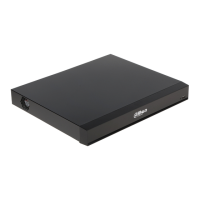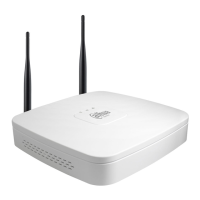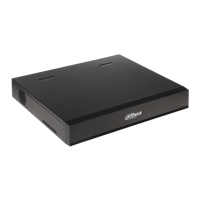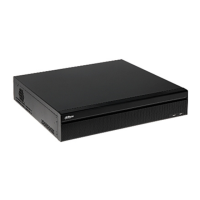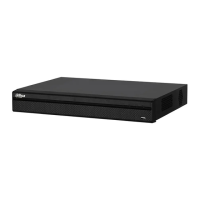Local Basic Operations 197
Table 4-45
In the Channel list, select a channel to set the motion detection.
Click Setting to define the motion detection region.
Enable or disable the motion detection function. Check the box to
enable the function.
Define a period during which the motion detection is active.
The higher the value is, the easier it is to trigger an alarm. But at the same time,
the false alarm may occur. The default value is recommended.
The alarm device (such as lights, sirens, etc.) is connected to the alarm output
port. When an alarm occurs, the NVR device transmits the alarm information to
the alarm device.
When the alarm ends, the alarm extended for a period of time. The time range is
from 0 seconds to 300 seconds.
Check box to enable a pop-up message in your local host PC.
Select the check box. When an alarm occurs, the NVR device uploads an alarm
signal to the network (including the alarm center).
This function is for some series products only.
You need to set the alarm center first. For details, see "4.12.9 Alarm
Centre."
Select the check box. When an alarm occurs, the NVR device sends an email to
the set mailbox to notify the user.
You need to set the email first. For details, see "4.12.6 Email."
Select the check box and select the needed recording channel (support multiple
choices). When an alarm occurs, the NVR device activates the channel for
recording.
You need to enable intelligent recording and auto recording first. For details, see
"4.1.4.6 Schedule."
Select the check box and click Setting to select the channel and PTZ action.
When an alarm occurs, the NVR device associates the channel to perform the
corresponding PTZ action. For example, activate the PTZ in channel one to turn
to the preset point X.
Tripwire alarm supports to activate PTZ preset point only.
You need to set the corresponding PTZ actions first, see "4.4.3 Configuring
PTZ Functions."
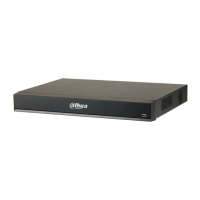
